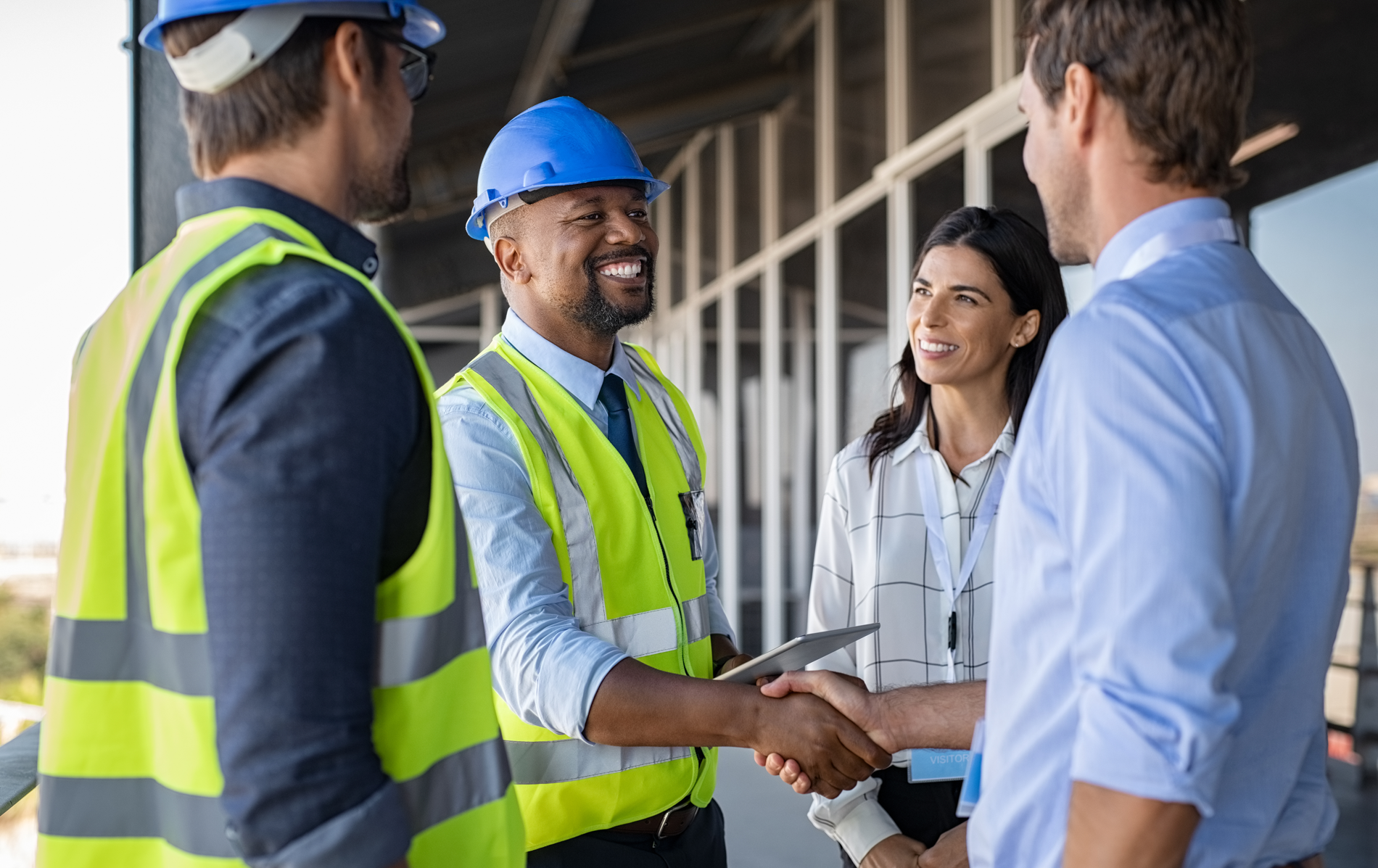The Occupational Safety and Health Administration (OSHA) establishes Emergency Response planning, training, and procedure requirements for employers, as one self-contained part of its multi-pronged Hazardous Waste Operations and Emergency Response (HAZWOPER) Standard (29 CFR 1910.120). This note describes these requirements, and places them in the context of a variety of emergency response planning requirements.
Read MoreAudit, Compliance and Risk Blog
OSHA requirements for employers’ emergency response activities
Posted by Jon Elliott on Wed, Jul 10, 2024
Tags: Health & Safety, OSHA, Safety and Health at Work, workplace safety, Hazardous Waste
Since the 1980s, the Occupational Safety and Health Administration (OSHA) has required most employers to protect their workers from workplace chemical hazards, and to train workers to protect themselves. Most employers are subject to OSHA’s Hazard Communication Standard (HCS; 29 CFR 1910.1200), or to variants imposed by states delegated OSHA’s authority. Many of the present requirements were established by massive revisions adopted in March 2012, when OSHA recast HCS to align it with the United Nations-sponsored Globally Harmonized System of Classification and Labeling of Chemicals (GHS). OSHA’s 2012 revisions conformed the US to GHS Revision 3, which was issued internationally in 2002. The most obvious change was the adoption of Safety Data Sheets (SDSs) to replace longstanding Material Safety Data Sheets (MSDSs), but employers faced a series of deadlines during 2013-2016.
On May 20, 2024, OSHA significantly updated HCS requirements for the first time since 2012, primarily to reflect GHS changes through Revision 7 (which was published in 2017). OSHA’s revisions take effect on July 19. The remainder of this note summarizes these changes, based on the affected subsections or appendices.
Read More
Tags: OSHA, Safety and Health at Work, workplace safety, Hazardous Waste, Hazard Communication, Hazardous Chemicals
The Occupational Safety and Health Administration (OSHA) is authorized to inspect regulated workplaces, although it generally inspects only workplaces deemed highly hazardous (which typically are targeted sector-wide by OSHA National Emphasis Programs (NEPs) or their regional or state equivalents), or those subject response to complaints or reported incidents of injury or illness (I&I). On April 1, OSHA revised provisions in its inspection standard (29 CFR 1903) clarifying which “employee representatives” can accompany an inspector during a walk-around; the revisions are to become effective on May 31. This revision reflects part of broader inspection revisions proposed on August 30, 2023 (which I wrote about HERE). The rest of this note discusses the change to walk-around provisions.
Read MoreTags: Health & Safety, OSHA, Safety and Health at Work, workplace safety
Biden Administration proposes limited increases in OSHA budget
Posted by Jon Elliott on Mon, Apr 08, 2024
On March 11, the Biden Administration issued its budget proposal for federal Fiscal Year (FY) 2025 (October 1, 2024 through September 30, 2025). The administration proposes a $655.5 million budget for the Occupational Safety and Health Administration (OSHA), a 3.7% ($32.1 million) increase above OSHA’s adopted 2023 budget of $632.4 million (the Administration had proposed $701 million). OSHA is presently operating under the latest FY 2024 Continuing Budget Resolution (since no budget has been adopted for FY 2024 (I wrote about the Administration’s FY 2024 proposal HERE). Even if an FY 2025 budget is enacted, political differences make significant reductions from this proposal likely, but it’s worth reviewing the proposal as a reflection of the Administration’s ongoing environmental priorities. The remainder of this note summarizes the Biden Administration proposal.
Read MoreTags: Health & Safety, OSHA, Safety and Health at Work, Cal/OSHA, FTE, Joe Biden, USA
Saskatchewan extending workplace violence prevention requirements to all employers
Posted by Jon Elliott on Thu, Mar 07, 2024
Saskatchewan’s Employment Act (SEA) requires employers to take action to protect their employees against workplace violence. Since 1997, express requirements have applied to workplaces “prescribed” by regulations based on higher hazards; effective on May 17, 2024 these requirements apply in all workplaces, implementing SEA amendments enacted in 2023 by Bill 91 (“The Saskatchewan Employment (Part III) Amendment Act, 2022”). The rest of this summarizes workplace violence prevention (WVP) requirements set forth in the SEA, and in regulations issued and administered by the Occupational Health and Safety (OHS) Division of Saskatchewan’s Ministry of Labour Relations and Workplace Safety.
Read MoreTags: Health & Safety, Workplace violence, Safety and Health at Work, workplace safety, safety violations, OHS, SEA
OSHA issues new Process Safety Management Standard enforcement guidance
Posted by Jon Elliott on Fri, Feb 09, 2024
The Occupational Safety and Health Administration’s (OSHA’s) Standard for Process Safety Management of Highly Hazardous Chemicals (usually referred to as “PSM”) requires extensive risk assessments and reduction efforts by facilities where a significant incident involving these chemicals might have catastrophic consequences. OSHA adopted PSM in 1992, and has made only minor technical revisions in the ensuing three decades. OSHA has also issued enforcement guidance to its inspectors, which it had not revised since 2012. However, in December 2023 OSHA issued an extensive new PSM enforcement policy, most of which is formatted in a total of 192 Questions and Responses designed to guide enforcement – and compliance that can obviate enforcement. The remainder of this note provides a very brief summary of the 120 page Enforcement Policy document.
Read MoreTags: Health & Safety, OSHA, Safety and Health at Work, workplace safety, chemical safety, PSM
On November 22, the Occupational Safety and Health Administration (OSHA) issued a Safety and Health information Bulletin (SHIB) discussing “safety helmets” as evolved alternatives to traditional hard hats, and offering recommendations for situations where employers should switch. On December 11 the agency announced that it’s following its own advice and replacing its own employees/inspectors hard hats with safety helmets. The rest of this note discusses OSHA provisions for personal protective equipment (PPE) providing head protection, and the rationale and examples of the benefits of upgraded headgear.
Read MoreTags: Health & Safety, OSHA, Safety and Health at Work, workplace safety
OSHA reminds employers about duty to keep young workers safe
Posted by Jon Elliott on Tue, Dec 19, 2023
The Occupational Safety and Health Administration (OSHA) provides a “Young Workers - You have rights!” webpage on its website, compiling regulatory and practical information for employers and workers. As we approach the annual spike in youth employment during the end-of-year Holidays, this provides a timely reminder to focus on the needs and rights of young people in workplaces. The webpage targets information as follows:
- Young Workers
- Employers
- Parents and Educators
- Real Stories
- Hazards
- Resources
The remainder of this note summarizes these materials, focusing on information useful to employers.
Read MoreTags: Health & Safety, OSHA, Safety and Health at Work, workplace safety
WorkSafeBC reminds employer to prevent slips, trips and falls
Posted by Jon Elliott on Tue, Dec 05, 2023
On October 24, 2023, WorkSafeBC, British Columbia’s provincial occupational health and safety (OHS) regulator and workers’ compensation overseer, issued a reminder to employers to address the hazards of workplace slips, trips and falls. The reminder began with a recitation that approximately 20 percent of all workplace injuries in the province relate to slips, trips, and falls. The agency also reported that “in the past six years, almost 41,000 workers in B.C. suffered slip-trip-and-fall injuries, including fractures, sprains, and dislocations.” The agency notice follows these statistics with reminders of what employers can and should do to reduce the likelihood and severity of these injuries. The remainder of this note summarizes this information.`
Read MoreTags: Health & Safety, Safety and Health at Work, workplace safety, Injury, OHS
The Occupational Safety and Health Administration (OSHA) “Medical Services and First Aid Standard” requires employers to provide their employees with ready access to medical attention, including treatment and consultation, in the event of an occupational injury or illness. (29 CFR 1910.151). These services can be made available onsite, or at medical facilities in “near proximity” for use by injured employees. This Standard has not been revised since OSHA adopted it in 1998, but the agency has updated and expanded compliance guidance in the intervening 25 years; this includes OSHA’s “Best Practices Guide: Fundamentals of a Workplace First-Aid Program” (2006). The rest of this note discusses these requirements.
Read MoreTags: OSHA, Safety and Health at Work









